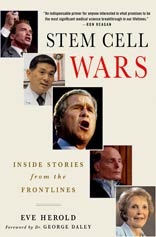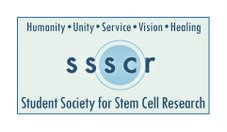| | SPECIAL THANKS | | 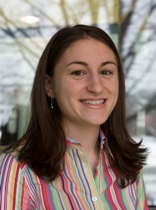 SSSCR extends a special thanks to Laura Myers of Dartmouth, Editor of the Stem Cell Digest and student at Dartmouth College, whose effort led to the publication of this inaugural issue. SSSCR extends a special thanks to Laura Myers of Dartmouth, Editor of the Stem Cell Digest and student at Dartmouth College, whose effort led to the publication of this inaugural issue.
"I am excited about the expansion of SSSCR to 25 chapters and it is my hope that the Stem Cell Digest will provide our members information and a unqiue perspective in the Pro-Cures Cause," Laura Myers. | | | START A SSSCR CHAPTER | | The fall semester is approaching and the timing to start a SSSCR chapter at your school could not be more perfect. If you are interested in starting a chapter contact us at info@ssscr.org to learn more. | | | QUOTE | | "Man's finest hour - his greatest fulfillment to all he holds dear - is that moment when he has to work his heart out in a good cause and he's exhausted on the field of battle - victorious." | | | AN INSIDE PERSPECTIVE: A talk with George Daley, M.D., Ph.D. | | 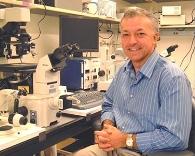 By Laura Myers, Dartmouth College By Laura Myers, Dartmouth College
George Daley, M.D., Ph.D. is Associate Professor of Pediatrics in the Division of Hematology/Oncology at Boston Children's Hospital and Dana Farber Cancer Institute and Associate Professor of Biological Chemistry and Molecular Pharmacology at Harvard Medical School. He received a bachelor's degree from Harvard University (1982), a Ph.D. in biology from MIT (1989), and an M.D. degree from Harvard Medical School (1991). Dr. Daley's laboratory studies stem cell development and differentiation, emphasizing derivation of functional hematopoietic and germ cell elements from embryonic stem cells, and the genetic mechanisms that predispose to malignancy. Q: How did you get interested in science and medicine? A: I had an inspirational high school biology teacher who started to get me excited about science. In college, I had many mentors and professors who also made science exciting. In my first year of college, I started my work-study program scrubbing dishes in the dining hall but ended up working in a cell biology lab instead. Even in college, however, I wasn't immediately certain that I would do medicine. Q: How do you think science has changed from when you entered it until now? A: The topics have certainly changed. Recombinant DNA was being developed in the late 1970's to early 1980's. The human genome project emerged in the 1990's. We can now clone in a matter of days what took years to do before. Q: What is your most memorable experience as a graduate student? A: I was writing my thesis about one particular project that had been successful, but there was another project, transferring human leukemia to a mouse to prove that a gene caused leukemia, that had not been successful. Late one night, I took a break from writing and went into the animal facility to check on my mice. I still remember my heart racing when I realized that one of my mice had contracted the leukemia that I had been trying to study. It was a very memorable feeling. Q: As a research scientist, what accomplishment has had the most meaning for you? A: I think that training my first graduate student has been the most meaningful experience. Q: What advice would you give to students who hope to pursue a career in science? A: Grow a thick skin and love science for the process, not the product. Science is difficult because it is wrought with negative feedback and criticism. It's only when you can survive this that you can feel proud. Q: How do you see stem cell research changing medicine? A: I see stem cell research as the fundamental foundation of our understanding of biology. It facilitates our learning about human development, maintenance and repair mechanisms and tissue generation, and gives us insight into both normal and pathological pathways. Q: What are the biggest barriers that we face for stem cell research to reach clinical trials and cures? A: Our ignorance of cells, both in how they behave and how we can use them as a form of medicine. Q: How do you feel about Bush's recent veto of stem cell legislation? A: Certainly not unexpected but disappointing nonetheless. | | | POLICY UPDATE: At a Crossroads in History | | 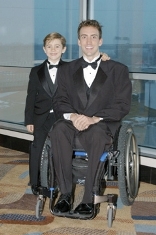 By Jeff McCaffrey, University of Missouri-Kansas City By Jeff McCaffrey, University of Missouri-Kansas City
In the Eighteenth Century, Yale College, which later became Yale University, took a stand against the smallpox vaccination. According to then Yale president, Timothy Dwight IV, "If God had decreed from all eternity that a certain person should die of smallpox, it would be a frightful sin to avoid and annul that decree by vaccination." [1] Fortunately, however, English physician and scientist Edward Jenner developed the smallpox vaccine, a technology that has saved millions of lives over the past two centuries. In an experiment in 1796, Jenner found that transplanting tissue from lesions of people with cowpox would prevent them from contracting smallpox.[2] Jenner found this prospect of eradicating smallpox to be worth enduring the criticism of those like President Dwight. The debate over embryonic stem cell research is similar to that over vaccine research because the conflict is between a powerful figure with strong religious convictions, President Bush, and a group of scientists, physicians and patients. However, the difference between the two debates is simple: President Bush has the power to block national funding of stem cell research. Recently, President Bush vetoed federal stem cell legislation that was passed by Congress for the second time in two years. This piece of legislation would allow grant money from the National Institutes of Health to be used to study stem cell lines that were created after August 9, 2001. While a Congressional override may be possible, it appears that the votes needed for a two-thirds majority may not exist. In another strategy to increase federal funding of hESC research, Sens. Tom Harkin (D-IA) and Arlen Specter (R-PA) have introduced a provision in the 2008 Labor-HHS-Education spending bill that will allow for federal funding of hESC lines created before June 15, 2007. The bill has been approved by the Senate Appropriations Committee on June 21, 2007 in a 26-3 vote. The next step is for the bill to be voted on the Senate floor. Passage of this appopriations bill with the stem cell provision will increased the eligible funding for approximately 400 hESC lines. The debate over funding of stem cell research continues at the state level. In Missouri, for example, voters approved Amendment 2, The Missouri Stem Cell Research and Cures Initiative, during the November 2006 elections. However, opponents of stem cell research have continued expressing their disapproval of this initiative and with some success, as shown by Stowers Institute for Medical Research's recent decision to stop its expansion plans in Kansas City. Mary Kay Culp, executive director for Kansans for Life, says, "I am happy to hear they are putting off expanding if their reason is that they don't find the right political climate for doing embryonic stem-cell research…It indicates our political position in Missouri is strong."[3] As a pro-cures movement, we must remember that our opponents are strong but that we are stronger. Like Edward Jenner, we must believe in cures; we must believe that ailments like diabetes, cardiovascular disease, paralysis and Parkinson's can one day be diseases of the past just like smallpox is today. Jenner alone changed the course of history and medicine with his revolutionary idea of curing smallpox, and we too stand at a crossroads. If we come together, we can lead this country down the correct path.
[1] Fitzmier, John. New England's Moral Legislator: A Life of Timothy Dwight, 1752-1817. Bloomington and Indianapolis: Indiana University Press, 1998. [2] Riedel, Stefan. "Edward Jenner and the history of small pox and vaccination." Baylor University Medical Center Proceedings (2005). Accessed 1 July 2007. [3] Gertzen, Jason. "Stowers Institute puts expansion plans on hold." Kansas City Star [Kansas City] 27 June 2007. | | | CHAPTER HIGHLIGHT: Texas A&M University | | 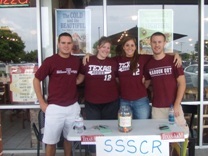 By Laura Myers, Dartmouth College By Laura Myers, Dartmouth College
When we see a coin on the street, we usually don't think twice about it; we seldom, if ever, bend down to pick it up. But members of the SSSCR chapter at Texas A&M raised $172 in four hours by doing a penny drive at their local grocery store. According to chapter president, Nicole Schechter, their goals were 1) to inform the public about what SSSCR is and what its goals are 2) to direct the public to the organization's website so they could learn more about activities going on in their area and become members 3) to raise money for their chapter to pay for supplies like flyers, banner, etc. Schechter said, "Not only was it a ton of fun to get out there as a group, but it was hugely successful!" She also said that the members of the chapter are looking forward to doing similar programming in the future. | | | EDITORIAL: A Story of Hope | | 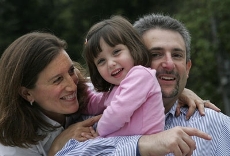 By Danny Heumann, J.D., Patient Advocate By Danny Heumann, J.D., Patient Advocate
I have been paralyzed for 22 years, and during that time I have dreamed about the three greatest moments of my life.
1) The day I was married.
2) The day my daughter was born.
3) And the day I hope is coming soon when I'm seated next to Michigan's Governor as the new legislation that eases our state's restrictions on embryonic stem cell research is signed.
My future was forever changed Aug. 13, 1985, when I was an 18-year-old summer camp counselor in upstate New York . I was a backseat passenger in a car traveling with three other camp counselors. The driver of the car was speeding around a curve and lost control. He was killed and the two other passengers walked out without a scratch. There were no drugs or alcohol involved.
At the hospital, I was diagnosed as a T-6 paraplegic, with no movement or sensation from the chest down. I have not been able to walk or feel the lower half of my body since the night of my accident. The accident occurred two weeks before I was set to begin my freshman year at Syracuse University . After intensive care with pneumonia, surgery to stabilize my broken back, two months of inpatient rehabilitation and dealing with the many secondary complications (that continue today) associated with spinal cord injury, I started Syracuse . I graduated from Syracuse 's Newhouse School of Public Communications in 1991. After working to lobby legislators in Washington , DC for increased federal funding for neurological research at the National Institute for Health, I decided to go to law school. I attended the Washington College of Law at American University and graduated with my J.D. in 1998.
After my accident, my parents, along with relatives and friends established The Daniel Heumann Fund for Spinal Cord Research, which has raised $5 million for basic scientific research in this country and around the world.
Being involved with research, I know how difficult it is for medical science to find cures for the many diseases and disabilities that plague the citizens of our state and country. However, a state enacting legislation based on fear and political pressure by faith-based groups makes my blood boil and my heart break. The impact of Michigan preventing embryonic stem cell research from moving forward is closing the door faster on my dream of getting out of this wheelchair and walking again. I want to do the things for my family that able-bodied husbands and fathers take for granted everyday.
Nothing will or can deter me from calling on the Michigan Legislature to lift the state's ban on embryonic stem cell research. We need to allow our scientists to do this research in an ethical manner.
Our state lawmakers have a moral obligation to allow Michigan 's world-renowned scientists to do the kind of work that is legally permissible in the overwhelming majority of states in our country and other nations around the globe. We need to support the scientific community's ability to study and test in Michigan the potential of unused embryonic stem cells that can bring about treatments and cures for countless diseases and disabilities. Otherwise, these stem cells will continue to be discarded as medical waste. Michigan needs to allow the parents who have created these excess embryos to decide how they want their excess embryos to be used or not used for life saving research.
Furthermore, letting our scientists pursue Somatic Cell Nuclear Transfer (SCNT) is the key to potentially unlocking the chains that now handcuff Michigan 's researchers. The only way this research can be deemed successful is if we allow our scientists to create patient-specific stem cells that can be immune from rejection, since the cells will come directly from the patient. As a result of this research, we could be the first state to create diverse stem cell lines that will benefit all members of society. For example, to help African American children and adults who suffer from Sickle Cell Anemia and Type I Diabetes.
I agree with those who say Michigan will need to strengthen its ban on human reproductive cloning. I disagree, however, with those who say embryonic stem cell research is not pro-life. This research represents the true pro-life position because it could save human lives and eliminate human suffering.
Three decades ago, in vitro fertilization for couples who could not have children was dismissed by some legislators and religious groups and leaders in Michigan as repugnant. Now, this science is commonplace.
Today, the IVF process is a frequently used procedure for couples who are having infertility issues. I should know: My wife and I used IVF to successfully conceive our now 3 1/2 year-old daughter, Kate.
I am not just fighting to see embryonic stem cell research legislation passed for myself so that I can someday walk with my family. As her father, I want to make sure that if my daughter gets a rare disease or suffers a spinal cord injury that she would not die or suffer as I have for the last 22 years.
My philosophy in life is that I live for today, but I hope for tomorrow. Let's give hope to the thousands of Michigan citizens who suffer from diseases and disabilities. We need to know that our lawmakers will enact legislation that brings hope for a better tomorrow, so our state and our scientists can use their knowledge to make all our dreams come true. _____________
Danny Heumann is the one of the founding board members of Michigan Citizens for Stem Cell Research and Cures. For more information about Danny, please visit www.heumannlycapable.com. | | | RECENT DISCOVERIES | | Science. 2007 Jun 8;316(5830):1404-5. ***** ***** Science. 2007 Jun 8;316(5830):1422-3. | | | UPCOMING CONFERENCES AND EVENTS | | ***** ***** ***** | | | Featured Conference | 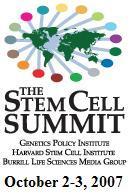 | | hESC Workshop | 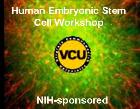 | | Featured Organization | 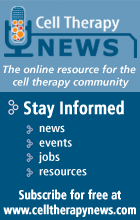 | | Featured Book | | | |
SSSCR extends a special thanks to Laura Myers of Dartmouth, Editor of the Stem Cell Digest and student at Dartmouth College, whose effort led to the publication of this inaugural issue.
By Laura Myers, Dartmouth College
By Laura Myers, Dartmouth College
By Danny Heumann, J.D., Patient Advocate




 By Jeff McCaffrey, University of Missouri-Kansas City
By Jeff McCaffrey, University of Missouri-Kansas City


